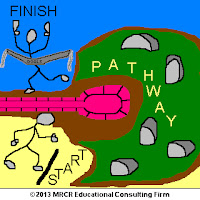Hike Preparation
Author: Manuel R. CortezRodas
We Are Going Hiking! We have made a decision and we are going to go hiking. We are going hiking and we have decided that we are going here. To this place that we have decided would be good for us to go hiking at. We have also decided that we are going hiking on a set time. This time will give us the opportunity to make the necessary preparations, encourage participants, gather the gear needed for the hike, and then go on our hike.
Preparation for the hike must be done in the time we have from the moment the decision is made, to the moment we go on our hike. Preparation is necessary as we need to think of what possible events and outcomes we expect to take place as we go hiking. Preparation is to be done by the participants, so that they are ready for the mental, physical, and spiritual needs that are anticipated in the hike. The gear must also be prepared for the hike, as it is the supporting tool in which we may come to depend if the need arises. This is why the gear we use for the hike must be in a ready condition which allows it to be used by the participants.
Go. The time has come, and we must go on the hike for which we have prepared for. The gear is ready, the participants are gathered, the path has been planned, council was seek from the start, and now we take action. We begin to hike together, as we planned, toward our goal, prepared for obstacles, and overcoming challenges, until together, we all reach our goal and return back safely and secure with the knowledge of the experience that we have learned.
Copyright 2013. MRCR Educational Consulting Firm. All Rights Reserved.








